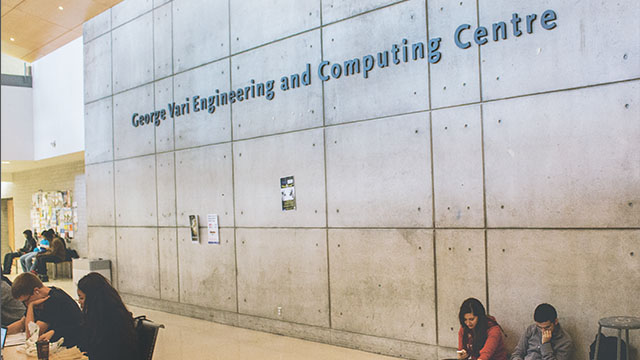Ontario has lowest per-student funding in Canada, leading schools to turn to private donations
Photo by Peter Milonas/The Ryersonian
TORONTO (CUP)—Cash-strapped Ontario universities are turning to the private sector for financial support, but at what price?
Government funding has not kept pace with the cost of university operations, said Adam Kahan, vice-president of university advancement at Ryerson University. It’s private funding that supports the university and allows it to meet its objectives.
According to the Canadian Association of University Teachers, Ontario has the lowest per-student funding in Canada. When government funds dry up, as they are wont to do, universities are forced to find alternative sources of income.
“Private funding is essential for the continued growth and development of the university,” said Kahan.
But when did Canadian universities begin accepting private donations?
“This is new to Canada in relative terms, probably in the last 20 years,” said George Gekas, a professor at the Ted Rogers School of Management.
Gekas said the idea to supplement university budget shortfalls with private donations came to Canada from the US.
Ryerson president Sheldon Levy admits private contributions are important, but said “the university’s ability to work day by day is a function of government grants and tuition fees.”
Some say these two revenue streams are inadequate at their current rate.
“Pervasive government underfunding means that the quality of university education is under threat,” said Kate Lawson, president of the Ontario Confederation of University Faculty Associations.
“That’s a direct result of austerity pulling money out of post-secondary education,” said Matthew Flisfeder, a professor in Ryerson’s department of politics and public administration.
Click here for the original story from the Ryersonian
Indeed, Ontario had the highest undergraduate tuition fees in Canada for full-time students in 2013, according to Statistics Canada.
Gekas said universities must accept private donations as a matter of survival.
“If we assume that the purpose of the university is survival, forget the educational purposes, you have to survive to achieve the other objectives—delivering education,” he said. “We have to find the funds. If we assume the funds from the public purse are inadequate to meet the needs of technology and education, we have to find other sources.”
Not all faculties garner equal attention from donors.
Joel Westheimer, a professor in the faculty of education at the University of Ottawa, said fields of research that may be leveraged for future profit—technology, for example—are more attractive to donors.
“While advanced computer chip design may be the next great money-maker for the university, it is only the arts and social sciences that help young people develop fully as human beings and as democratic citizens,” Westheimer said.
Flisfeder said the problem is rooted in a socio-economic system that is driven by business interests.
“When corporate and business interests start to dominate, all forms of reason and rationalizing are driven towards finding the most efficient and cost-saving way of accomplishing whatever objective we have,” he said.
Another worry is that when universities receive private donations, they make themselves vulnerable to the demands of donors.
Academics are divided on the issue of private funding in the university. Gekas said some of his colleagues are wary of private donations.
“They feel that if you do that, you sell your soul to the devil, or more accurately the corporate entity, and the corporate entity will impose upon you its will.”
But he said a diverse funding platform can be a “win-win situation.”
“We live in a mixed economy, we have to realize that we need a healthy public sector and a healthy private sector to coexist, and the one to assist the other,” he said. “There’s no other way around it.”





